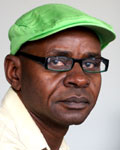In its report entitled ‘Seeing Dead People: Exploring Visuals of Dead Bodies in the Media' and compiled by Sandra Roberts and Winnie van Riet, the MMP said: “Decisions should be weighed up according to respect for the deceased or injured persons' dignity and the potential trauma of family and friends. This needs to be balanced against the news value of the image and decisions about whether the image is necessary to underscore the seriousness of an issue.”
The MMP also said that when the media show a gruesome visual of a person, that person's relatives and friends may also be confronted with this imagery on top of the trauma of their loss, should the person die.
“Further trauma can be easily avoided though the choice of images, remembering that such visuals can continue to haunt the bereaved for years,” it said, adding that children can also be intrusively affected by watching the news or reading newspapers in which gruesome visuals appear, especially those printed on a newspaper's front page.
Harold Gess, lecturer of photojournalism at Rhodes University in Grahamstown, echoed the MMP's sentiments. He told Bizcommunity.com: “One of the most important considerations should be that of the feeling of family members when seeing the image. Sometimes public interest may override this but it is my opinion that this should always be taken into account.
“An editor may sometimes decide to publish an image in order to bring the torch of public criticism to shine on a particular activity within a community. For example, a photograph of a teenager killed during an illegal street racing may be upsetting to the family but will, perhaps, save the lives of other children if the practice is halted.”
Some viewers and readers accuse media houses of capitalising on people's misery to boost their viewership and circulation, calling on organisations such as the Press Council and the Broadcasting Complaints Commission to help stop the practice.
Unfortunately, their cry is likely to fall on deaf ears as there is no legislation in SA that governs the publication and broadcasting of visuals of dead bodies in media.
The MMP's report was the culmination of an intense monitoring of SA's 14 major newspapers and e.tv primetime news and SABC 3 news during June 2008, shortly after the xenophobic violence.
While the report found that SABC 3 and e.tv news showed visuals of dead bodies in a ‘dignified manner', Daily Sun showed a greater amount of dead people compared to other newspapers, two of which were in front page under the headlines ‘Gone to God - And her body lies in church spread out like a cross' and ‘Bloodbath! Three die as HIV+ lover goes crazy'.
Rhodes University's Gess advised: “Editors need to develop a code of ethics for their individual publications against which images can be tested. I would never suggest a simple ‘stop publishing' order.
“A test of the ‘public good' or the ‘public interest' would be a good starting point. From this point of view, images could be tested as to whether publishing them will have any positive effect on the society in which they are shown or not, and this would be balanced against any potential negatives for individuals or the community.”
The MMP said: “Evocative images that touch the audience need not be gruesome. Images that protect the identity of the dead while showing the loss of life can be more poignant. Creative photography and use of images can assist the audience in establishing link with the story.”
The report also acknowledged the complexities faced by journalists in considering issues of human rights when showing visuals of dead bodies in media.
